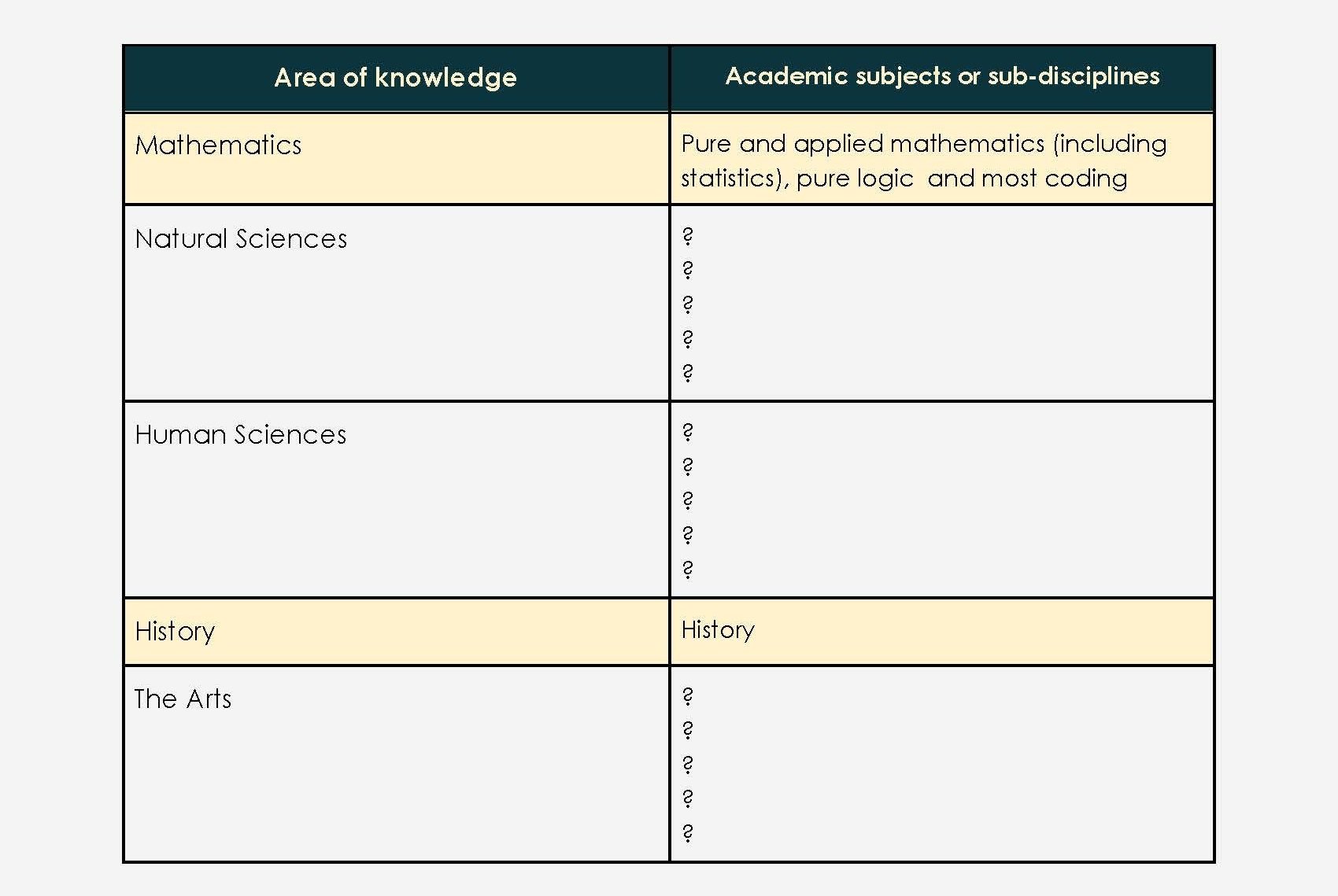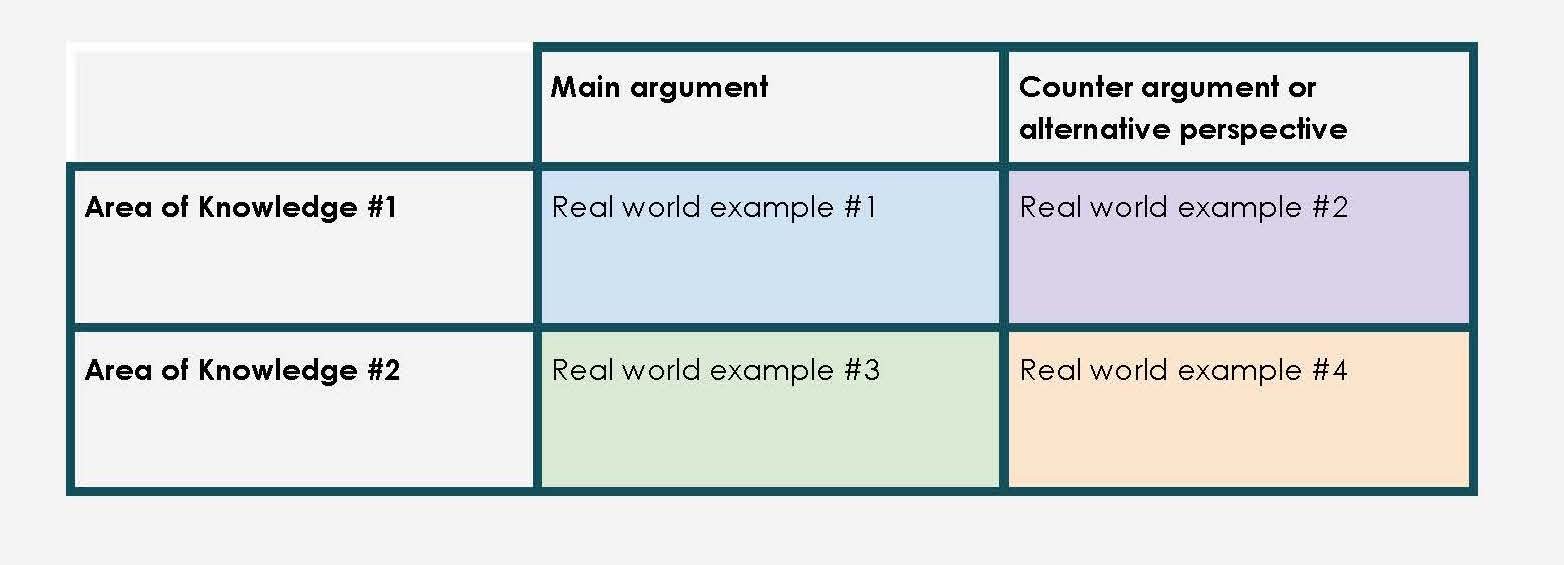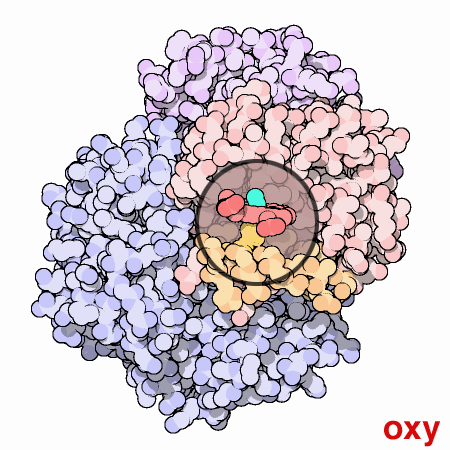TOK ENDGAME:
TOK Essay STRATEGY
This audacious digital artwork was chosen to evoke the bold claim that the TOK Essay Strategy class activities suggested below work will work for any prescribed title.
Image credit: Daisuke Takakura human cloning art.
Getting started
The class activities on this page should be approached only after working through TOK Essay essentials.
The planning strategies on this page can be tackled “as is,” or rolled out in stages—with each section building on the next, over several weeks—perhaps fine-tuned by the TOK teacher with specific reference to individual prescribed titles.
The school’s internal deadlines for major IB Diploma assessments, and/or alignment agreements with TOK teaching colleagues, may also influence how a given teacher might proceed with this content.
Overview of TOK Essay strategy
Here are the six cumulative sections:
Unpack your prompt
Reconnect with the 5 Areas of Knowledge
Focus on your TOK essay format
Refining real-life examples and more
Returning to the Rubric
Finessing the quality of your analysis
CLASS ACTIVITY I:
unpack your prompt
This essential first activity is best approached as a lively class discussion. I begin with exploring a few carefully selected titles from a previous examination session. This provides some critical distance, downplays any underlying stress associated with looming essay deadlines, and reinforces the notion that unpacking the prompt is the obvious, bottom line, fail-safe, commonsense approach for ensuring a '‘sustained focus on the title” for any TOK essay. Here are the generic guiding questions:
1. Define the meanings of keywords in the prompt.
2. Clarify any nuanced or slightly ambiguous phrases in the prompt.
Students should be invited to come up with an extra guiding question tailored to the wording of the selected individual prompt. To contextualize and demystify this, share this TOK Essay satirical poem. The poem consists solely of “Command Terms” excised from fifteen years of May and November TOK Essay prescribed titles.
CLASS ACTIVITY II:
Reconnect with the 5 Areas of Knowledge
Grid-Based World Population Cartogram for the year 2000 used in Geography
Image credit: SASI Group (University of Sheffield)
The Exhibition prompts addressed the Core and Optional Themes. The TOK Essay focuses on Areas of Knowledge. The two Areas of Knowledge maybe imposed by the prompt. Where you have a free choice, it is a sensible, default strategy to select two contrasting Areas of Knowledge from the official list:
Natural Sciences
Human Sciences
History
The Arts
Mathematics
Don’t plunge in yet. Deliberately slow down. Take the time to reconnect with the Areas of Knowledge and appreciate the scope and reach of each discipline. Start by completing the table below to demonstrate that you can pinpoint the various academic subjects or sub-disciplines encompassed by Area of Knowledge domains. The following guidelines will help:
List some of the academic subjects included in both the natural sciences and the human sciences. This will ensure that you do not confuse them and will widen the scope of your thinking. Don’t just limit your responses to the Group 3 and Group 4 IB subjects offered in your school.
Generate a quick list of the key art genres. Don’t neglect literature. Also reflect for a moment on the knowledge implications of art domains that involve non-linguistic representation
No action required for the table, but pause to consider what is it about History and mathematics that qualify them as unique, standalone Areas of Knowledge?
CLASS ACTIVITY III:
Focus on your TOK Essay format
Immerse your students in this basic format. Start with a silent reading. Follow this with a public reading featuring multiple student voices—enriched with some focused Q&A.
Here are the headings for an obvious, bare minimum, non-negotiable, skeletal format for the essay.
Prescribed Title
Introduction
Main Body
Conclusion
Citations
No surprises so far. Each component will be unpacked below with the important qualification that the main body of the very best essays will transcend the basic format. Let’s stay with the fundamentals for now keeping in mind that even the greatest jazz performers can improvise, embellish and astonish, only after the basics have been mastered.
— PrESCRIBED TITLE
The prompt must be used verbatim – “exactly as given.”
— Introduction
The reader’s* first impression is important. Take the time to get the opening sentence just right.
Next delve into the meaning of the key terms in the prompt, using the precise wording and avoiding the cliche of dictionary definitions. If there is a particular nuance, or ambiguity, in the precise way the question is framed, take a moment to unpack that too. For example, some prompts seemingly ask a direct question pointing to a “yes or no,” dichotomous response. Don't be fooled. A “yes and no” approach will almost certainly be the better way to go. At bottom, all TOK prescribed Essay titles invite “to-what-extent?” exploration.
In your introduction, state in advance the two Areas of Knowledge of your essay, even if they have been imposed in the prompt. This courteous and safe convention sets the frame for the reader and entails only a tiny word count redundancy.
Finally, embrace the reality that you can’t possibly address every facet of an intriguing, open-ended Knowledge Question in 1600 words; so spell out succinctly, in general terms, what aspect, or aspects, of the prompt you have decided to explore.
*especially busy IB examiners!
— Main Body
The essay prompt will require you to explore a knowledge question with reference to two Areas of Knowledge. The obvious strategy – at least in the planning stage – is to divide the main body into two roughly equal chunks.
Your essay must feature “different points of view.” A tried and trusted, minimalist approach would be to begin with a main argument for each Area of Knowledge and then counter this with an alternative perspective. This would produce a minimum of four body paragraphs.
Each of the four body paragraphs will feature a real world example that will instantiate and help justify your arguments as you explore the essay title. Here is a crude visualization. The four colored boxes represent the four main paragraphs of the body of your essay.
— Conclusion
Cleverly and succinctly summarize and integrate your findings for each stated Area of Knowledge. Deliberately contrive to use the prompt’s key terms in what you write. You only had 1600 words. The end of your conclusion is where the story will stop this time, Try to end on an intriguing, open-ended aspect of the stated prompt that points to further exploration.
— Citations
Keep track of your sources as you go. You will need formal citations for all non-trivial factual assertions, news items, artworks etc. Like in your Extended Essay, carefully standardize your format. Here is an example of formal citation of an online source:
Ewen Callaway (2022) Oldest-ever DNA shows mastodons roamed Greenland 2 million years ago. Nature. News article: December 7, 2022 https://www.nature.com/articles/d41586-022-04377-x (Date accessed: December 8, 2022)
CLASS ACTIVITY IV:
Approximate word count allocationS
for the basic format
At this juncture it is worth pausing to ask students to spend a few moments thinking about how best to distribute the 1600 words across the sections of the skeletal format. Most students come up with the following distribution or a version very close to it.
The First Lady of Ukraine and her two children visiting a Raptorex display at the University of Chicago Fossil Lab. Reflect for a moment… paleontologists are quite constrained by their subject matter. They cannot easily perform controlled experiments to test their hypotheses like most other natural scientists. What must paleontologists do instead?
CLASS ACTIVITY V:
REFINING REAL-LIFE EXAMPLES AND MORE
So far we have unpacked the specific language in the prompt, revisited some sub-domains of the five Areas of Knowledge, and acknowledged the importance of justifying your knowledge claims with non-generic, real-world examples. We also established a very basic, six section structure for the essay with preliminary word count allocations. Now let’s build on that foundation.
No specific class activity is proposed here. What follows are thinking points to guide students just before they plunge into writing the first drafts of their essays. The structure could also be adapted by TOK teachers as they approach the second prescribed teacher interaction: “Discuss the student’s initial exploration of their selected title.”
Focus on the following:
1. Reconfirming your choice of prescribed title and your choice of Areas of Knowledge
2. Initial brainstorming and subsequent meta-thinking about the appropriateness of your selection of worked through, real-life examples.
3. Developing nuances in your analysis, especially with regard to main arguments and alternative perspectives
4. Pinpointing any underlying assumptions and implications
“I love deadlines. I like the whooshing sound they make as they fly by.”
CLASS ACTIVITY VI:
RETURNING to the Rubric
In TOK Essay Essentials the class experienced a close encounter with the criteria that define a good TOK essay when they graded IB exemplars out of 10 using the rubric. As they approach writing their own essays, students should revisit the rubric paying special attention to the overarching diagnostic question:
“Does the student provide a clear, coherent and critical
exploration of the essay title?”
Students should be aiming high. Here are the criteria for scoring 9-10 points.
The discussion has a sustained focus on the title and is linked effectively to areas of knowledge.
Arguments are clear, coherent and effectively supported by specific examples. The implications of arguments are considered.
There is clear awareness and evaluation of different points of view.
Here is a convenient Google Doc of TOK Essay Rubric
Students should perform a short public reading of the overarching diagnostic question and the top range of criteria in the Rubric. This should be followed by a brief whole class discussion pinpointing the subtleties of the holistic qualitative descriptors.
The descriptors for the 7-8 points range are highly commendable but workmanlike:
Pertinent—Relevant—Analytical—Organized
Ask the class to characterize the descriptors for the 9-10 points range:
Insightful—Convincing—Accomplished—Lucid
End this short session by recommending that students periodically refer back to the Rubric as they draft and redraft their essays. Remind them that the final teacher intervention—”comment on one draft of the student’s essay”—will echo the Rubric criteria.
Here is a delightful visual distraction, and a timely reminder near the end of this TOK Essay unit, of the ubiquitous and much loved, epistemological meta-concept—“The Map is not the Territory.”
Does a Hemoglobin molecule really look like this? This cute gif. is not even bright red! At this scale we cannot see its 2952 carbon atoms. We, have little clue that it is approximately 5nm wide, and can only barely comprehend its giant molecular mass of 64 500 g/mol.
Despite everything that the map maker simplified, or chose to leave out entirely, the model is still quite useful. We can appreciate the protein’s dynamic quaternary structure and watch an animated cartoon oxygen atom (fake colored florescent green) being exchanged in one the molecule’s four heme (Fe) groups (fake colored dark pink).
CLASS ACTIVITY VII:
FINESSING the quality of your analysis
All this generic planning only goes so far. As you draft your chosen TOK Essay you will be on your own to decide on the final structure and flow, and natural paragraphing. To obtain the highest scores the quality of your analysis will be paramount. Notice that the rubric calls for arguments that are “clear, coherent and effective.” More nuanced is ensuring that the “implications of arguments are considered.”
Your essay should be a model of clarity (could a smart adult, unconnected to TOK, understand it fully in one reading?). Your essay will provoke and invite the reader to accompany you on an unpretentious intellectual journey. You will not try to win your argument like an adversarial lawyer or snappy debater. Rather your essay will flow to-and-fro. There will be argument and counterargument. There might be some critical evaluation of gray area or ambiguities arising from contrasting viewpoints.
Most aspects of your exploration will be overt and in plain view but certain underlying assumptions and undercurrent implications of your arguments (especially if stretched a notch) will need to be identified and clarified. At times you will assert something and then converse with yourself — building on the to-and-fro, challenging yourself by articulating further intriguing questions as they emerge.
Along the way you may decide that you might need to modify at least one of your real-world examples to meet the criteria of “awareness and evaluation of different points of view.” Including a non-Western, international or epistemic justice aspect is always appreciated by IB examiners, but be careful not stray too far from the Areas of Knowledge realm.
A region of the Spiderweb galaxy protocluster, revealed in 2024 by the James Webb telescope. Spiderweb is 10 billion light years away.
Photo credit: NASA
CLASS ACTIVITY VIII:
HIDDEN IN PLAIN SIGHT —
TOK AIMS ARE THe SECRET Key to ESSAY SUCCESS
The TOK Essay is a culmination, a rite of passage. A timely, focused class reading of the TOK Aims (from the 2022 TOK Subject Guide) will reveal how closely TOK Aims align with the format and the assessment rubric of the TOK Essay.
To encourage students to reflect on the central question, “How do we know that?”, and to recognize the value of asking that question
To expose students to ambiguity, uncertainty and questions with multiple plausible answers
To equip students to effectively navigate and make sense of the world, and help prepare them to encounter novel and complex situations
To encourage students to be more aware of their own perspectives and to reflect critically on their own beliefs and assumptions
To engage students with multiple perspectives, foster open-mindedness and develop intercultural understanding
To encourage students to make connections between academic disciplines by exploring underlying concepts and by identifying similarities and differences in the methods of inquiry used in different areas of knowledge
To prompt students to consider the importance of values, responsibilities and ethical concerns relating to the production, acquisition, application and communication of knowledge.
Anticipating the final day of the Wyra’whaw coming-of-age festival in Brazil’s Amazon rainforest.
Photo credit: Eraldo Peres, Associated Press
CODA
LIGHTNING FAST, Rubric-based check list
✅ “a sustained focus on the title”
✅ “ linked effectively to areas of knowledge”
✅ “effectively supported by specific examples”
✅ “implications of arguments are considered”
✅ “there is clear awareness and evaluation of different points of view”









